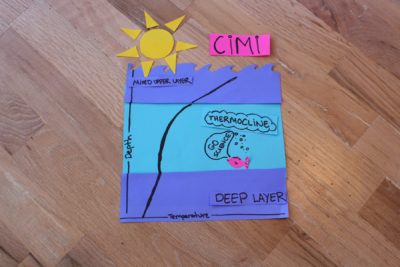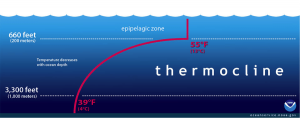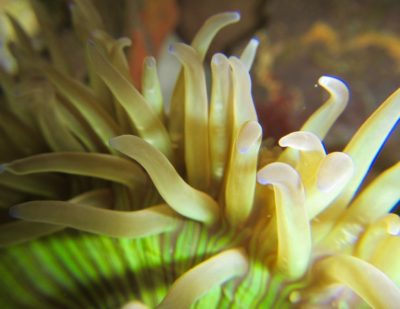
Have you ever been swimming in the ocean and seen a pretty shell in the sand on the bottom? Even though it’s deep you dive down to grab it, and as you descend you notice the water temperature drop suddenly! Whether you knew it or not, you were experiencing a phenomenon similar to something called a thermocline.
In the ocean, the thermocline is a layer that acts as the divide between the mixed upper layer and deep ocean waters. The upper layer of the ocean, also called the epipelagic zone, is exposed to sunlight, causing the water to be warmer in temperature. Waves, winds and currents help to mix the waters within that layer. Deeper ocean waters tend to be very cold (around 4°C) and much more stagnant than the upper layers of the ocean. Within the thermocline, water temperature drastically decreases with depth, at a rate higher than the adjacent ocean layers.

The epipelagic zone is the upper layer of the ocean that is exposed to sunlight and wave action. Here, the temperatures vary, but are generally warmer. In the picture above, notice the more severe drop in temperature as the depth increases in the thermocline.
The thermocline’ s existing depth and thickness can vary depending on many factors. The time of year can have an impact on this layer of the ocean and so can location. In polar areas of the Earth, the water is consistently cold from the surface to the depths, so the thermocline is usually nonexistent. In tropical and temperate regions, it varies between seasons.
To learn more go to http://oceanservice.noaa.gov/facts/thermocline.html
Written by: Kenzie Richards


